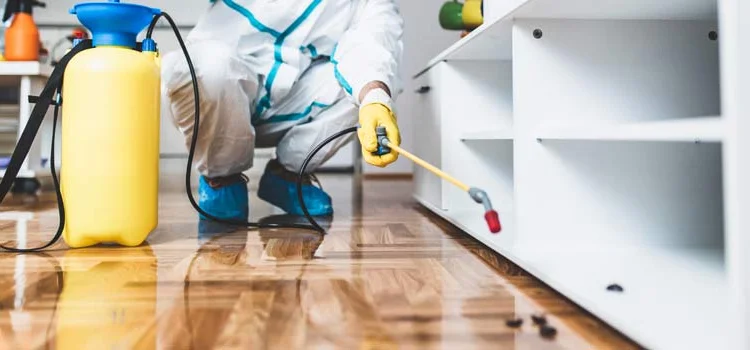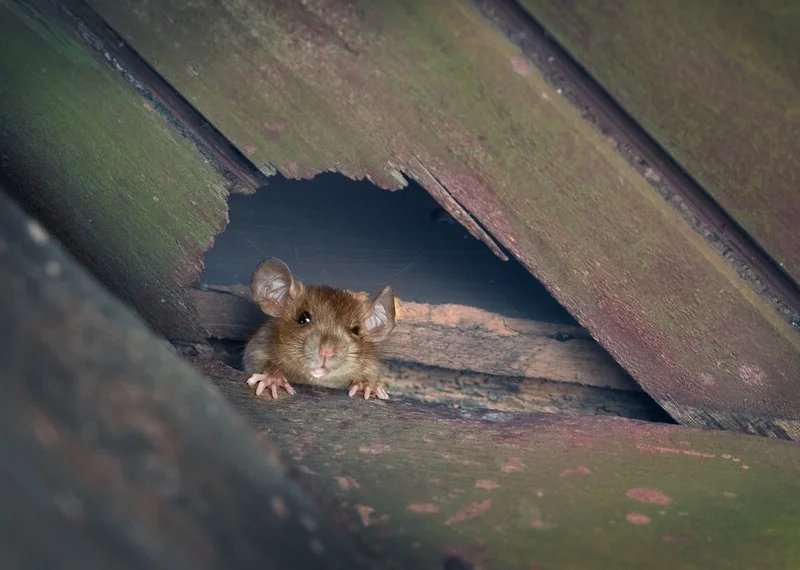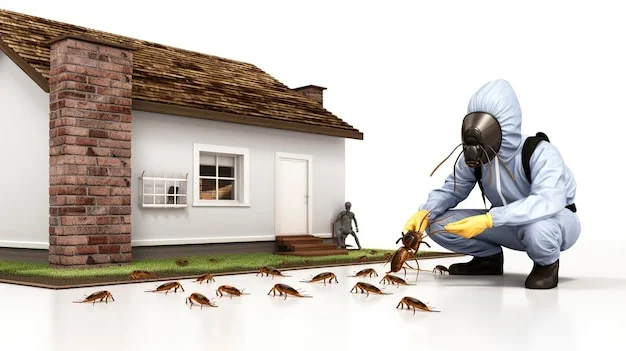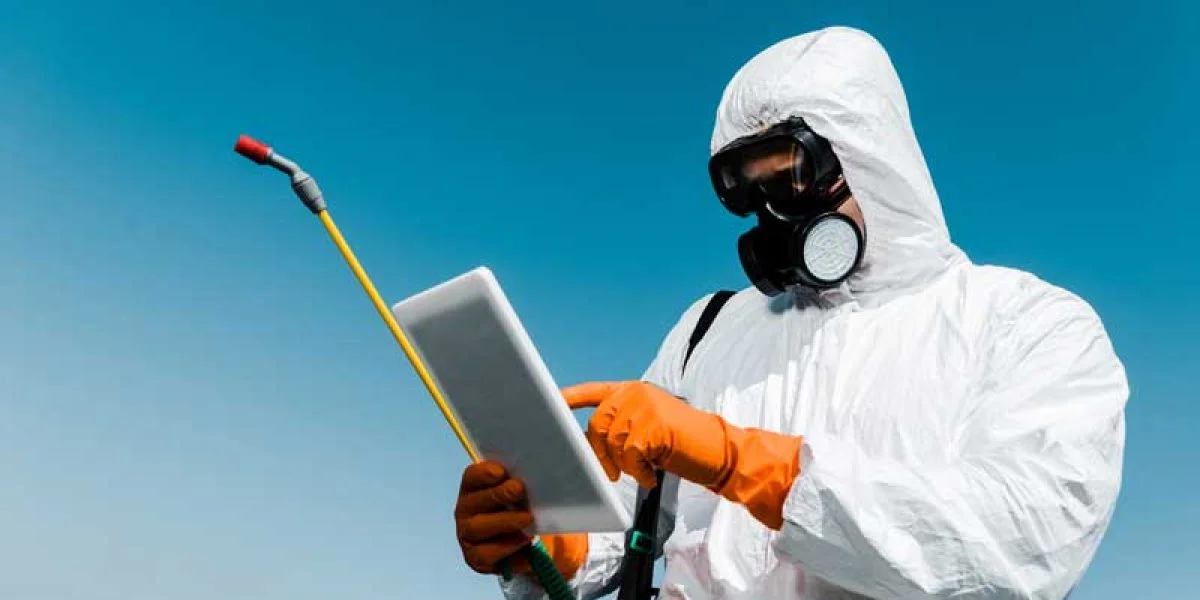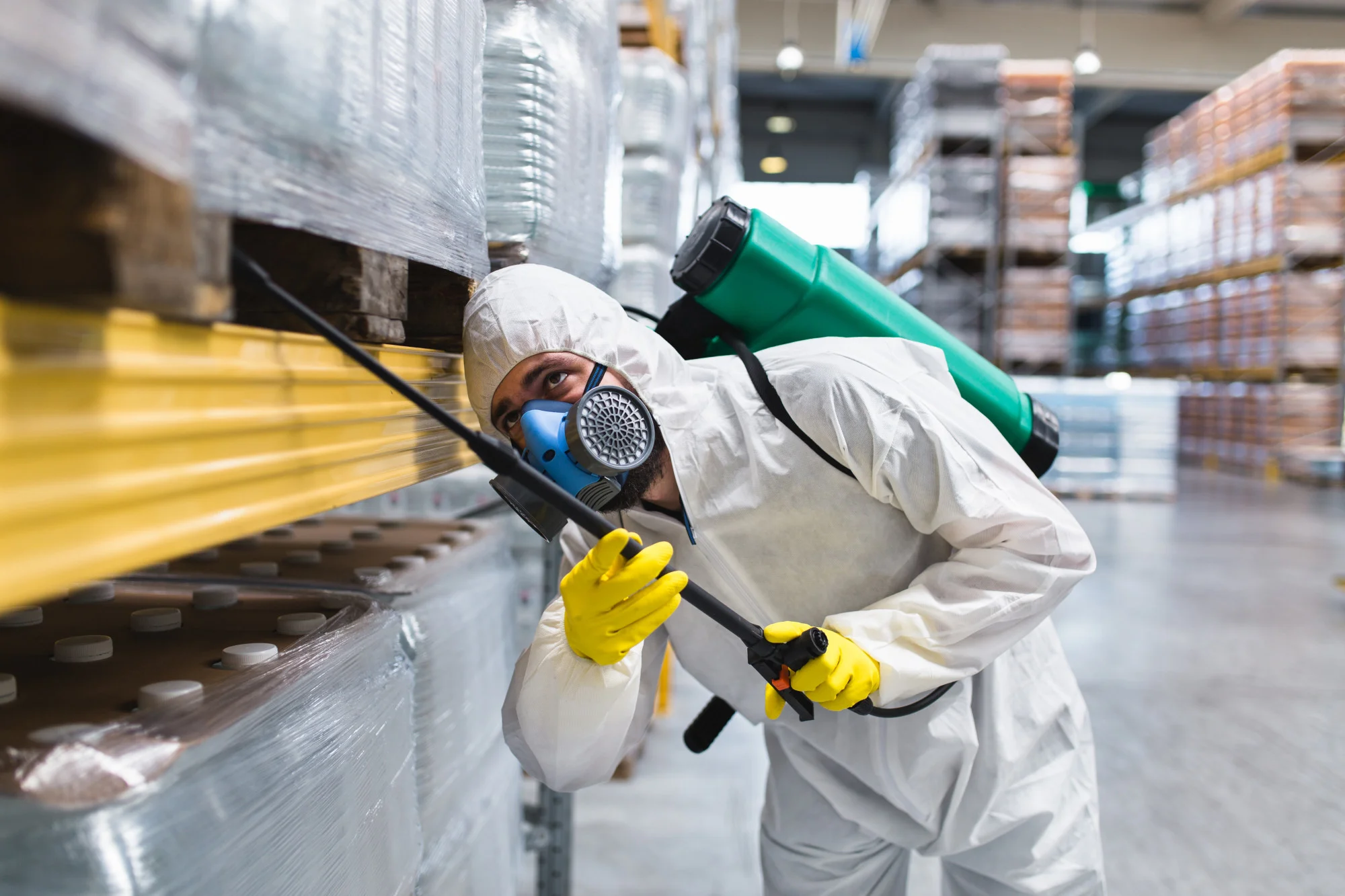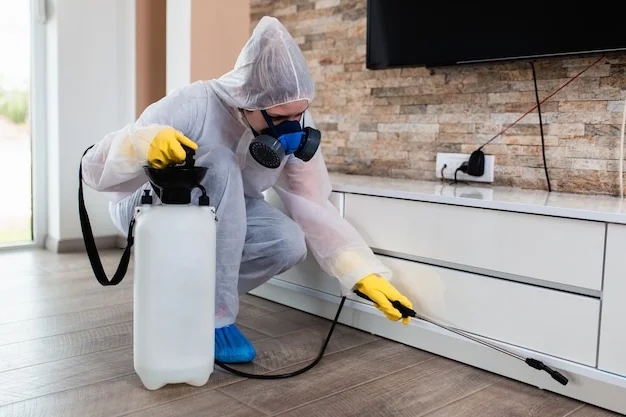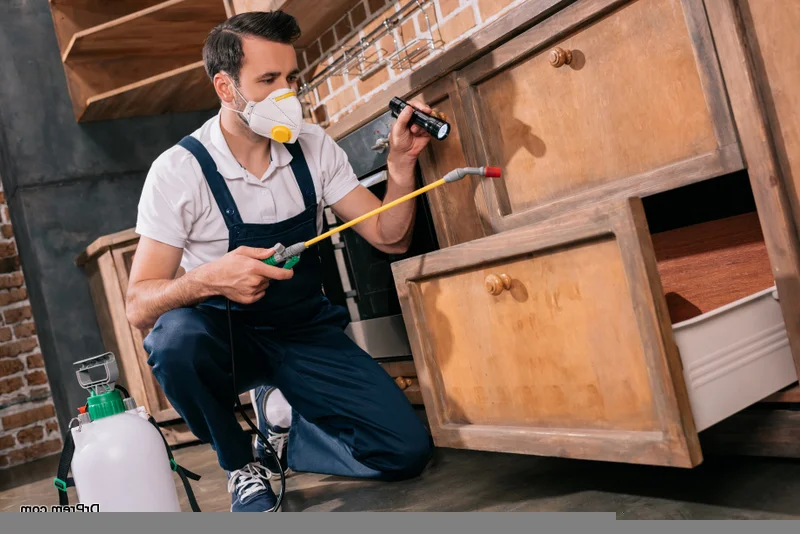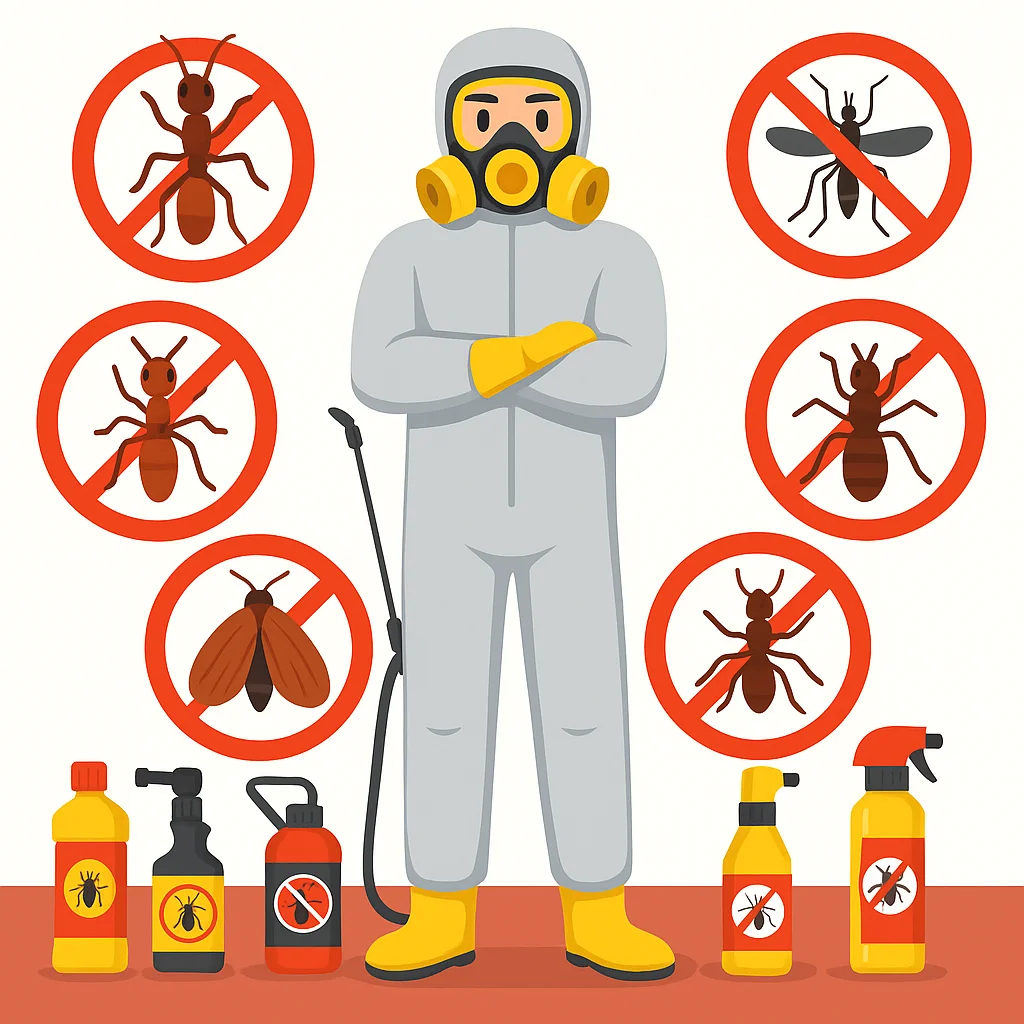When wild animals decide your home or business is the perfect place to settle, it can quickly become a serious problem. From scratching sounds in the attic to damaged insulation and contaminated spaces, wildlife intrusions pose health risks and property damage concerns. Unlike traditional pest control, wildlife pest control requires specialized knowledge of animal behavior, local regulations, and humane removal techniques that prioritize both safety and animal welfare.
Professional wildlife management goes beyond simple removal. It involves understanding why animals chose your property, addressing entry points, and implementing long-term prevention strategies. Whether dealing with raccoons in your chimney, bats in your attic, or squirrels in your walls, effective wildlife control combines humane animal removal with comprehensive exclusion work to ensure these unwanted guests don't return.
Wildlife emergency? Our trained specialists provide
emergency pest control
24/7 and safe
animal exclusion services to protect your property immediately.
Get help now for fast, humane solutions!
Common Wildlife Pest Challenges
Wildlife control presents unique challenges that differ significantly from traditional pest management. Understanding these challenges helps property owners recognize when professional intervention is necessary:
-
Legal considerations Many wildlife species are protected by federal and state laws, requiring specific permits and methods for removal. Improper handling can result in legal penalties and harm to protected species.
-
Safety risks Wild animals can carry diseases like rabies, histoplasmosis, and parasites. They may also become aggressive when cornered or protecting young, posing bite and scratch risks to untrained individuals.
-
Property damage Wildlife can cause extensive structural damage through chewing, nesting, and waste accumulation. This includes damaged insulation, electrical wiring, ductwork, and wood structures.
-
Seasonal behavior patterns Animals have specific breeding, feeding, and shelter-seeking cycles that affect removal timing and success rates. Understanding these patterns is crucial for effective control.
-
Multiple entry points Unlike insects, larger animals often create or exploit multiple access points, requiring comprehensive property assessment and exclusion work to prevent re-entry.
Professional wildlife pest control addresses these challenges with specialized equipment, training, and knowledge of humane practices that protect both property owners and animals.
Common Wildlife Pests
Different wildlife species present unique challenges and require specialized removal approaches. Here are the most common wildlife pests that affect residential and commercial properties:
Raccoons
Professional removing wildlife from residential property
Raccoons are highly intelligent and adaptable animals that frequently invade attics, crawl spaces, and chimneys. These nocturnal bandits are excellent climbers and can cause significant damage while searching for food and shelter. Female raccoons often choose attics as safe denning sites for raising their young, making removal timing critical.
Common signs include heavy thumping sounds at night, damaged roof areas, torn insulation, and distinctive paw prints. Professional raccoon removal involves live trapping, exclusion work, and cleanup of contaminated areas to prevent health risks from raccoon droppings.
Squirrels
Inspecting attic spaces for wildlife activity
Squirrels are persistent chewers that can gain entry through surprisingly small openings. They're most active during daylight hours and often enter attics through roof areas, vents, or damaged soffits. Once inside, they can chew electrical wires, creating fire hazards, and contaminate spaces with urine and droppings.
Gray squirrels and flying squirrels present different challenges, with flying squirrels being nocturnal and traveling in family groups. Effective control involves sealing entry points with chew-resistant materials and removing attractants like bird feeders from the immediate area.
Bats
Thorough inspection for wildlife entry points
Bats are beneficial animals that control insect populations, but they become problematic when roosting in buildings. Many bat species are federally protected, requiring specialized knowledge of legal removal methods and timing restrictions. Bat colonies can grow to hundreds of individuals, creating significant health concerns due to guano accumulation.
Signs include squeaking sounds at dusk, brown staining around entry points, and accumulating droppings. Professional bat exclusion must be timed outside of maternity seasons and involves one-way exclusion devices that allow bats to leave but prevent re-entry.
Opossums
North America's only native marsupial, opossums often seek shelter under porches, decks, and in crawl spaces. While generally non-aggressive, they can carry diseases and create odor problems. These nocturnal animals are excellent climbers and may also access attic spaces through tree branches or exterior stairs.
Opossums are opportunistic feeders attracted to pet food, garbage, and fallen fruit. Removal typically involves live trapping and habitat modification to eliminate attractants. Exclusion work focuses on sealing ground-level access points and removing shelter opportunities.
Skunks
Skunks commonly dig under porches, sheds, and foundations to create dens. While their spray is the most obvious concern, skunks can also carry rabies and other diseases. They're attracted to properties with accessible food sources like pet food, garbage, and grubs in lawns.
Professional skunk removal requires careful handling to avoid spray incidents. One-way exclusion systems allow skunks to leave but prevent return. Habitat modification includes removing food sources and treating lawn grub problems that attract foraging skunks.
Humane Wildlife Removal Methods
Modern wildlife pest control emphasizes humane methods that prioritize animal welfare while effectively resolving conflicts. These approaches recognize that wildlife serves important ecological functions and should be managed with respect and scientific understanding. Professional wildlife control operators use evidence-based techniques that minimize stress to animals while ensuring permanent solutions for property owners.
Humane methods also comply with local and federal wildlife protection laws, protecting property owners from legal liability. By using appropriate techniques for each species, wildlife specialists can achieve better long-term results while maintaining ethical standards that reflect modern conservation values.
Professional wildlife control employs several humane approaches depending on the species and situation:
| Method |
Application |
Benefits |
| Live Trapping |
Raccoons, opossums, skunks, and other medium-sized mammals
|
Allows for safe capture and relocation without harm; effective for individual animals or small family groups.
|
| One-Way Exclusion |
Bats, squirrels, and animals with established denning sites
|
Allows animals to leave naturally but prevents re-entry; reduces stress and avoids separating mothers from young.
|
| Habitat Modification |
All wildlife species as prevention and deterrent
|
Addresses root causes by removing attractants; provides long-term control without ongoing intervention.
|
| Physical Barriers |
Preventing access to specific areas or structures
|
Permanent solution that protects property without ongoing animal interaction; durable and cost-effective long-term.
|
| Deterrent Systems |
Areas where exclusion isn't practical
|
Encourages animals to choose alternative locations; non-harmful and can protect large areas effectively.
|
The key to successful humane animal removal is using the right combination of methods for each unique situation, ensuring both immediate resolution and long-term prevention.
Professional Wildlife Inspection Process
Detailed exterior inspection for wildlife entry points
A thorough wildlife inspection is the foundation of effective animal control. Professional wildlife specialists conduct comprehensive property assessments that go beyond obvious signs of animal activity. This systematic approach identifies current problems, potential vulnerabilities, and risk factors that could lead to future wildlife conflicts.
The inspection process combines visual examination with specialized tools and knowledge of animal behavior patterns. Understanding how different species access and use properties allows specialists to develop targeted strategies that address root causes rather than just symptoms.
-
Exterior structure assessment Complete examination of rooflines, soffits, vents, chimneys, and foundation areas to identify current entry points and potential vulnerabilities that animals might exploit.
-
Interior space evaluation Inspection of attics, crawl spaces, basements, and utility areas for signs of animal activity including droppings, nesting materials, damage, and odors.
-
Evidence documentation Photography and detailed notes of all findings, including damage assessment, contamination levels, and wildlife species identification based on physical evidence.
-
Risk factor analysis Evaluation of landscape features, food sources, water availability, and shelter opportunities that make the property attractive to wildlife.
-
Exclusion planning Development of comprehensive strategies to seal entry points, modify habitat, and prevent future wildlife problems through environmental management.
Need a thorough wildlife inspection? Our certified specialists provide
comprehensive property assessments and customized animal exclusion plans –
schedule your inspection today for complete peace of mind!
Wildlife Exclusion and Prevention
Structural Exclusion Methods
Installing wildlife exclusion barriers
Effective animal exclusion requires understanding animal capabilities and using appropriate materials for each species. Squirrels can chew through plastic and thin metal, while raccoons have dexterous paws that can manipulate simple latches. Professional exclusion uses species-specific materials and installation techniques that provide long-term protection.
Quality exclusion work addresses both current entry points and potential future access areas. This proactive approach prevents the cycle of ongoing wildlife problems and provides property owners with lasting solutions that protect their investment.
Habitat Modification Strategies
Reducing property attractiveness to wildlife involves addressing the four basic needs that draw animals to human-developed areas: food, water, shelter, and nesting sites. Professional wildlife management includes comprehensive habitat assessment and modification recommendations that make properties less appealing to target species.
Successful habitat modification goes beyond simple removal of obvious attractants. It requires understanding the specific needs and behaviors of local wildlife species and implementing changes that redirect animals to more appropriate natural areas while maintaining property functionality and aesthetics.
Prevention Investment
Investing in professional exclusion work typically costs less than repeated removal services and property damage repairs. Quality prevention work provides years of protection and peace of mind.
Residential vs Commercial Wildlife Control
Residential Wildlife Services
Homeowners face unique wildlife challenges that often involve family safety concerns and property value protection. Residential wildlife control focuses on creating safe, comfortable living environments while addressing the emotional stress that wildlife intrusions can cause families. Common residential issues include animals in living spaces, noise disturbances, and health concerns related to wildlife-borne diseases.
Home wildlife services emphasize family-safe removal methods and comprehensive exclusion work that protects the entire property. Technicians work closely with homeowners to explain processes, provide prevention education, and ensure long-term peace of mind through quality workmanship and service guarantees.
Commercial Wildlife Management
Commercial properties face different wildlife challenges including larger buildings, complex structures, and business continuity concerns. Commercial wildlife control must address liability issues, comply with industry regulations, and minimize business disruption during removal and exclusion work.
Businesses such as restaurants, warehouses, and manufacturing facilities require specialized approaches that consider food safety requirements, employee safety protocols, and regulatory compliance. Professional commercial services include ongoing monitoring, documentation for regulatory purposes, and emergency response capabilities for urgent wildlife conflicts.
Wildlife Cleanup and Restoration
Professional sanitization of wildlife-contaminated areas
Wildlife infestations often leave behind contaminated materials that pose health risks and structural damage. Professional wildlife cleanup involves more than simple removal of droppings and debris. It requires understanding of disease transmission risks, proper decontamination procedures, and restoration techniques that return affected areas to safe, functional condition.
Cleanup services include removal of contaminated insulation, sanitization of affected surfaces, odor elimination, and restoration of damaged materials. This comprehensive approach ensures that properties are not only wildlife-free but also safe and healthy for human occupancy.
-
Safe waste removal Proper disposal of contaminated materials including droppings, urine-soaked insulation, and nesting materials using appropriate safety equipment and procedures.
-
Surface sanitization Application of EPA-approved disinfectants to eliminate pathogens and neutralize odors on all affected surfaces including wood, metal, and concrete.
-
Insulation replacement Removal and replacement of damaged or contaminated insulation materials to restore energy efficiency and eliminate health hazards.
-
Odor elimination Specialized treatments to eliminate persistent wildlife odors that can attract other animals and create ongoing problems for property occupants.
-
Damage repair Restoration of chewed wiring, damaged ductwork, and structural elements to return the property to pre-infestation condition.
Legal and Regulatory Compliance
Wildlife control is heavily regulated by federal, state, and local laws designed to protect both animal welfare and public safety. Professional wildlife pest control operators must navigate complex regulatory requirements that vary by species, location, and time of year. Understanding these legal requirements is essential for property owners to avoid penalties and ensure ethical wildlife management.
Licensed and certified wildlife control specialist
Many wildlife species are protected under the Endangered Species Act, Migratory Bird Treaty Act, and various state wildlife protection laws. Bats, for example, cannot be excluded during maternity seasons, and many bird species are completely protected from harassment or removal. Violations can result in significant fines and criminal charges.
Professional wildlife control operators maintain current knowledge of all applicable regulations and hold necessary permits and licenses. They ensure that all removal and exclusion work complies with legal requirements while achieving effective results for property owners.
Legal Protection
Working with licensed professionals protects property owners from legal liability and ensures that wildlife control activities comply with all applicable laws and regulations.
Seasonal Wildlife Activity Patterns
Spring (March-May)
- Breeding season begins for many species
- Animals seek nesting sites
- Increased activity as animals emerge from winter shelters
- Young animals may become trapped in structures
Recommendation: Schedule comprehensive property inspections and complete exclusion work before peak breeding season.
Summer (June-August)
- Peak activity for most wildlife species
- Young animals learning to forage
- Bat maternity season restrictions in effect
- Increased food seeking behavior
Recommendation: Focus on habitat modification and monitoring; limited removal options for protected species during maternity periods.
Fall (September-November)
- Animals seek winter shelter
- Increased structure invasion attempts
- Optimal time for exclusion work
- Food storage behaviors increase
Recommendation: Peak season for preventive exclusion work and addressing access points before winter.
Winter (December-February)
- Animals in established winter shelters
- Limited outdoor activity
- Emergency situations may require immediate attention
- Planning season for spring prevention work
Recommendation: Address emergency situations; plan comprehensive spring exclusion and prevention strategies.
What Our Clients Say About Wildlife Services
"When we discovered a family of raccoons in our attic, PestControl100 handled the situation with incredible professionalism. They safely removed the animals and sealed every possible entry point. No more midnight disturbances!"
- Maria S., Homeowner
★★★★★
"Our warehouse had persistent issues with bats until PestControl100 installed their exclusion system. They worked around our business schedule and solved the problem permanently. Excellent commercial service."
- David R., Facility Manager
★★★★★
"The squirrel problem in our office building was getting out of hand. Their humane approach impressed our management team, and the results speak for themselves. Professional, effective, and ethical."
- Jennifer L., Property Manager
★★★★★
Frequently Asked Questions
Is wildlife removal humane, and what happens to the animals?
Yes, professional wildlife control emphasizes humane methods that prioritize animal welfare. Depending on the species and situation, animals may be relocated to appropriate natural areas, excluded using one-way systems that allow them to leave naturally, or managed through habitat modification that encourages them to choose alternative locations. All methods comply with federal and state wildlife protection laws.
How can I prevent wildlife from returning after removal?
Prevention involves comprehensive exclusion work that seals all current and potential entry points, habitat modification that removes attractants like food sources and shelter opportunities, and ongoing monitoring to detect new activity early. Professional wildlife services include detailed prevention plans tailored to your specific property and the wildlife species in your area.
What health risks are associated with wildlife in buildings?
Wildlife can carry various diseases transmissible to humans, including rabies, histoplasmosis (from bat guano), leptospirosis, and parasites like fleas and mites. Additionally, wildlife droppings and urine can contaminate insulation and surfaces, creating respiratory hazards. Professional cleanup and sanitization services address these health risks using appropriate safety equipment and EPA-approved disinfectants.
When is the best time to address wildlife problems?
The best time depends on the species and situation, but generally fall is optimal for preventive exclusion work before animals seek winter shelter. However, active infestations should be addressed promptly regardless of season. Some species like bats have legal restrictions during maternity seasons (typically late spring through summer), so timing is crucial for compliance with wildlife protection laws.
Emergency Wildlife Situations
Emergency wildlife response available 24/7
Some wildlife situations require immediate professional intervention for safety and property protection. Emergency wildlife control situations include animals in living spaces, aggressive wildlife behavior, animals trapped in structures, and situations involving potential rabies exposure or other health risks.
Our emergency response team is equipped to handle urgent wildlife conflicts safely and effectively. We maintain 24/7 availability for situations that cannot wait for regular business hours, ensuring that families and businesses get the help they need when wildlife emergencies occur.
When to Call for Emergency Wildlife Service
Contact emergency wildlife services immediately if animals are in living spaces, showing aggressive behavior, appear sick or injured, or if there's potential human or pet exposure to wildlife-borne diseases.
Wildlife Prevention Tips for Property Owners
While professional wildlife pest control provides the most effective long-term solutions, property owners can take several steps to reduce the likelihood of wildlife conflicts:
Implementing strategic wildlife prevention measures
Effective wildlife prevention combines environmental management with structural modifications that make properties less attractive to wild animals. Understanding what draws wildlife to human-developed areas helps property owners make informed decisions about landscaping, maintenance, and property management practices.
Regular property maintenance and vigilant monitoring for early signs of wildlife activity can prevent small problems from becoming major infestations. Working with wildlife professionals for annual inspections provides additional protection and early detection capabilities.
-
Secure food sources Store garbage in wildlife-resistant containers, bring pet food indoors, clean up fallen fruit from trees, and maintain bird feeders away from structures to avoid attracting animals.
-
Eliminate water sources Fix leaky faucets, improve drainage around foundations, cover water features when possible, and remove standing water sources that attract thirsty wildlife.
-
Remove shelter opportunities Trim tree branches away from rooflines, clear brush and debris piles, seal crawl spaces and storage areas, and maintain landscaping to reduce hiding places.
-
Regular maintenance inspections Check for loose siding, damaged screens, open vents, and other potential entry points during routine property maintenance activities.
-
Professional annual inspections Schedule yearly wildlife assessments with certified specialists to identify vulnerabilities and address potential problems before they develop into infestations.
Wildlife Control Investment and Value
Professional wildlife management represents a valuable investment in property protection, health safety, and peace of mind. Understanding the factors that influence wildlife control costs helps property owners make informed decisions about services and timing.
| Service Component |
Factors Affecting Cost |
Long-term Value |
| Initial Inspection |
Property size, accessibility, complexity of structures
|
Identifies all issues and prevents future problems through early detection and comprehensive planning.
|
| Animal Removal |
Species type, number of animals, location accessibility, legal requirements
|
Eliminates immediate problems and health risks while ensuring humane, legal compliance with wildlife laws.
|
| Exclusion Work |
Number of entry points, materials required, height/access difficulty
|
Provides permanent protection, prevents repeated infestations, and protects property value long-term.
|
| Cleanup Services |
Contamination extent, materials affected, restoration requirements
|
Eliminates health hazards, removes attractant odors, and restores property to safe, functional condition.
|
| Prevention Plans |
Property size, risk factors, monitoring frequency
|
Prevents costly future problems, maintains warranties, and provides ongoing peace of mind through professional oversight.
|
Investment Protection
Professional wildlife control typically costs significantly less than the property damage, health risks, and repeated DIY attempts that result from inadequate wildlife management approaches.
Advanced Wildlife Control Technology
Modern technology enhances wildlife control effectiveness
Modern wildlife pest control incorporates advanced technology to improve effectiveness, reduce environmental impact, and provide better outcomes for both animals and property owners. These innovations represent significant improvements over traditional approaches and demonstrate the evolution of professional wildlife management.
Technology-enhanced services provide property owners with better documentation, more precise solutions, and improved long-term monitoring capabilities. These advances make professional wildlife control more effective and valuable than ever before.
-
Thermal imaging inspection Advanced cameras detect heat signatures of animals in walls, attics, and other concealed spaces, allowing for precise location and more effective removal strategies.
-
Motion-activated monitoring Wildlife cameras and sensors provide ongoing surveillance of treated areas, documenting exclusion success and detecting new animal activity before problems develop.
-
GPS tracking systems For relocation programs, GPS technology allows monitoring of animal movement patterns and success rates, improving humane relocation effectiveness.
-
Smart exclusion devices One-way exclusion systems with sensors that confirm animal departure, ensuring complete exclusion before permanent sealing of entry points.
-
Digital documentation Comprehensive photo and video documentation of all work performed, providing property owners with detailed records for insurance and warranty purposes.
Don't let wildlife take over your property. Trust PestControl100 for safe, effective
wildlife pest control that protects your family, property, and local wildlife –
contact us today for comprehensive wildlife management solutions!
Wildlife Control Service Areas
Our certified wildlife specialists provide comprehensive humane animal removal and exclusion services throughout our coverage area. We understand local wildlife species, seasonal patterns, and regulatory requirements specific to each region we serve.
Comprehensive Coverage
From single-family homes to large commercial complexes, our wildlife control services are designed to meet the unique needs of different property types and situations. We provide the same high-quality, humane approach regardless of project size or complexity.
Our Wildlife Control Service Map

